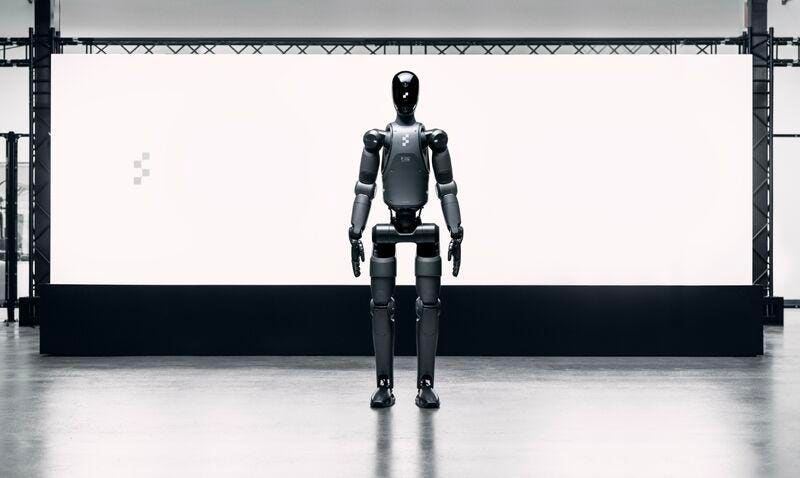The CEO of one of the leading manufacturers of humanoid robots says it has signed a second commercial customer that is “one of the biggest U.S. companies.” Figure CEO Brett Adcock also said that he sees the potential to ship 100,000 humanoid robots over the next four years, and said that Figure is focused on two markets: commercial and home.
“Our newest customer is one of the biggest U.S. companies,” Adcock says in an update on LinkedIn. “It gives us potential to ship at high volumes which will drive cost reduction and AI data collection. Between both customers, we believe there is a path to 100,000 robots over the next four years.”
It’s not immediately clear if Adcock means both this new customer and the one he announced in December, or if he’s referring to the two markets that he said Figure will focus on. (I have asked Figure for clarification.)
Figure was recently rated as one of the top two contenders out of 16 leading companies to crack usable, effective, and affordable humanoid robots by futurist and engineer Peter Diamandis. (Diamandis did disclose to me that his venture fund is an investor in Figure.) Figure stands out for shipping its first robot, Figure 01, just 31 months after incorporating. While Figure 02 is the currently shipping model, Diamandis says that Figure 03 is up and running in the lab, and it’s even more impressive.
Adcock says AI is a key driver in Figure teaching itself how to work.
“Last week, we successfully began running an end-to-end neural network on the new client’s use case,” he says. “Learning the use case with AI is the only path here as heuristics would be impossible to write. And every time I see these policies running, it feels like pure magic!”
A key focus right now, he says, is completing work at “high speeds and high performance.”
In January 2024, Figure 01 was tethered and moved at just 17% the speed of a human: hardly impressive. But technology advances quickly, and Figure 02 is seven times faster, the company says. While the company hasn’t released information about Figure 03 publicly yet, it’s likely that the third iteration will be even quicker and more capable.
It will need to be.
Figure 02 moves at 1.2 meters per second, Figure says, which translates into just 2.68 miles per hour, about half a mile per hour slower than average human walking speed.
Given the company’s pace of development, however, that seems possible, if not even likely.
“These humanoid robots are iterating very rapidly,” Diamandis told me in a recent TechFirst podcast, speaking about the industry in general. “I think we’ll see versions available in the house by the end of 2026.”
Adcock is not looking to grow the customer base massively right at the moment. His focus is rather to go deep with specific large customers.
“On the commercial side, our strategy is to stay focused on a small number of clients,” he stated on LinkedIn. “Early on, it’s more efficient for us to grow vertically within a few clients than to spread out across many.”
While Adcock did not say the name of Figure’s second customer, the first is BMW. He did say the second is “one of the biggest U.S. companies.” That could mean it’s one of Walmart or Amazon, the two largest U.S. companies by 2024 revenue, and both companies with massive and growing labor needs in logistics and transportation. It could also be Apple, the third largest, and one that desperately needs to on-shore production of iPhones and Macs to avoid potential tariffs under the new U.S. administration.
Other large U.S. companies include healthcare companies like UnitedHealth Group and CVS Health. The health care industry is one that will benefit massively from good and inexpensive humanoid robots, as they can be used as care aids and nurses in helping move patients as well as more prosaic tasks such as cleaning.
Getting humanoid robots out of labs and into the real world is critical for companies and robot manufacturers alike to test their capabilities and limits, and prioritize development for improvements. As Adcock mentions, real-world deployments also builds the pool of data for AI development and improvement.
Other leaders in the humanoid robot space include Agility Robotics, whose Digit was the first to get a paying job, but also many others, including Telsa with Optimus, Unitree, Apptronik, Sanctuary AI, and Agibot.
Only six of the top 16 are in the U.S., while eight are in China.
Read the full article here









